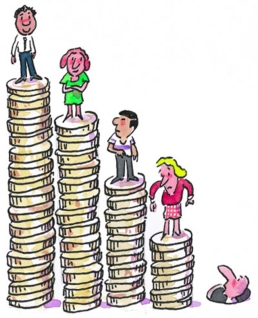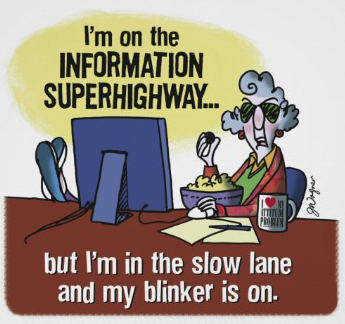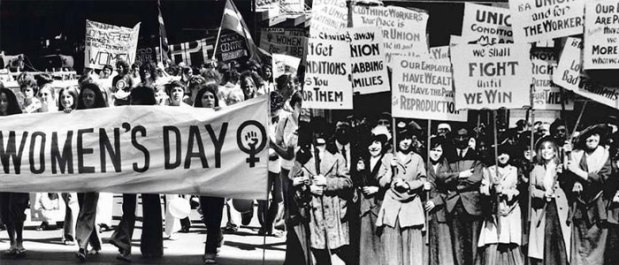Needless to say, what most people know about Mongolia is that it had something to do with Genghis Khan and the Mongol Empire, which at one point included much of Russia, China, Pakistan and most central Asian and Eastern European countries. The empire collapsed in the 14th century and a Mongolian state reemerged in 1912, but endured in Russian sphere of influence until the breakdown of Soviet Union. The country now has a population of 3 million and a GDP of about $15 billion-a bit less than that of Nicaragua (Butzer, ““Pluvial, Droughts, the Mongol Empire, and Modern Mongolia”). Though, it is a far more important place than the numbers suggest. Mongolia is chock full of extractable minerals, everything from copper to coal to gold. It’s also a natural experiment and a laboratory for social scientists seeking to understand why and how nations succeed in a very little time period. As history teaches us, rapid economic development can lead to secure future but also causes an increase of income inequality. The trend towards higher inequality has become clearly an issue in Mongolia, which historically had relatively moderate inequality levels (Nixson and Walters, 11). The debate over the rise of income inequality in Mongolia is originated from the privatization of state enterprises in the 1990s. This economic restructuring has further stimulated a number of social issues such as poverty.
Until recently, Mongolia had remained a relatively small, lightly populated, landlocked country that was buried in the Soviet empire for most of the twentieth century. When public protest erupted in the late 1980s, Mongolia emerged from 70 years of communist regime that was controlled by the Mongolian People’s Revolutionary Party. Surprisingly, the public’s challenge was accepted by the ruling party and led to a peaceful transition to capitalism (BTI report, 3). A reformist government took over, with little understanding of the economic catastrophe it was about to confront. Soviet aid was withdrawn. Living standards of people fell by an estimated 60 percent, while inflation reached 270 percent over the 1989-1993 period (Boone, 1994). Prior to transition, the policies of full and stable employment, the subsidization of basic necessities and the extensive system of social services including health and education that were free on point of delivery, meant that inequality was, by western standards, low and poverty largely absent (Nixson and Walters, 23).
Indicators of political and economic institution building over the last two decades paint an impressive picture, with 17% GDP growth in 2011 and a similar pace expected until 2020, if all goes as planned (World Bank, “Mongolia Quarterly Economic Update – February 2012”). However, the social development, namely the living standards of the population including poverty and inequality, has not succeeded adequately. The percentage of the population that is poor in Mongolia has been around 35 percent in the last decade. Household Socio-Economic Survey (HSES) concluded that 29.8 percent of the total population of Mongolia was living in poverty in 2011. As measured by the Gini coefficient of 0.36, the gap between rich and poor significantly widened. The richest 20 percent of the population consumes five times the amount consumed by the poorest 20 percent of the population (BTI report, 12-13).
As many scholars have argued, privatization is independently responsible for a considerable part of the rise in poverty and inequality in Mongolia. Privatization was essentially a political decision, taken without very much analysis or even consideration of the likely short or long-term impact on poverty and income distribution. The government was then estimated to own 75 percent of all properties in Mongolia. According to the government of Mongolia, 4,500 enterprises were privatized through the voucher program over the period of 1991-1994. From 1996 to 2000, additional 942 enterprises and assets were privatized through sealed bid auctions (State Property Committee, 2002). One unanticipated development happened during the privatization process that became the core reason of income and wealth distribution inequality. Each citizen was issued three vouchers that could be used to buy shares of enterprises and businesses. However, managers and directors of the state owned enterprises were able to amass controlling ownership positions by using the vouchers of their extended families. In the result, half of the enterprises were controlled by insiders and those who were already at top of society.
Other controversial aspect of the reform was the privatization of apartments and buildings that were owned by the State. Citizens would have to apply to the Housing Commission, local authorities or enterprises, for an apartment and would typically be put on a waiting list until one became available. Preparations for the privatization of private apartments started in 1993 and the current occupiers of the apartment were given the apartments for free of charge. Approximately 22 percent of the population benefited from this privatization. However, approximately 52 percent of the total population lived in yurts, with 29 percent of urban dwellers living in yurts (Griffin). The result of the privatization was that the rural population and most of the urban poor gained nothing from privatization, while existing occupiers and those that were able to acquire apartments from the new owners after privatization gained valuable assets that could be used as collateral to borrow money, start a business and sell for a significant capital gain. It could be argued therefore, that the privatization of apartments led to a significant increase in distribution of productive wealth. This further caused Matthew Effect on real income flows by enabling more resources to the apartment recipients.
In addition, the privatization has led to major restructuring and retrenchment of the labor force. Since all of the factories and businesses were owned by the State prior to privatization, new owners didn’t have much of knowledge and skills to operate their new private sectors. Although, the government was liberalized and left the enterprises unregulated, almost all of the initial factories and small companies have disappeared in the early 1990s, causing deep structural unemployment (Nixson and Walters, 57). Thus the big enterprises that had fortune to stay in business took advantage of the pressure of unemployment and poverty in the labor market to reduce wages for the unskilled manual workers, which raised the gap between unskilled and managerial workers. According to Milanovic, this hollowing out of the center of the distribution, with some benefiting many experiencing sharp fall in wages, is a common experience in transition from Soviet style economies. Measures of income inequality have risen in post-privatization, transitional economies such as Hungary, Czech Republic and Armenia (Milanovic, 299).
Although it was in the bottom quarter of all nations in per capita GDP in the late 1990s, the country is now considered as one of the fastest growing nations in the world. The economic gains of Mongolia have affected the country largely, though the gap between the rich and poor has grown even larger. Many scholars suggest that the increased income inequality was originated from the mass privatization in the early 1990s, and has been intensified by the rapid growth and monopolization of corporations that were once State-owned enterprises, showing a sign of cumulative advantage. The degree of inequality and levels of poverty have been influenced by liberalization, deregulations, and also, of course, to the sharp falls in output and employment that accompanied it. The modern trends of inequality have been shifted to the subject of resource booming linked to two large mining development projects. The source of Mongolia’s new economic fortunes-abundant mineral wealth-may lead to even more inequality in the next decade.
Works Cited:
Boone, P. “Grassroots Macroeconomics Reform in Mongolia”. Journal of Comparative
Economics 18. 1994.
BTI 2012. “Mongolia Country Report”. Bertelsmann Stuffing’s Transformation
Index. March 14, 2014.
http://www.bti-project.org/uploads/tx_jpdownloads/BTI_2012_Mongolia.pdf
Butzer, K. “Pluvial, Droughts, the Mongol Empire, and Modern Mongolia”.
Proceedings of the National Academy of Sciences of the United States of
America (PNAS). March 13, 2014
http://www.pnas.org/content/early/2014/03/05/1318677111.abstract
Government of Mongolia State Property Committee. “Privatization Guidelines”.
Ulaanbaatar. 2001
Griffin, K. “A Strategy for Poverty Reduction in Mongolia”. UNDP. Ulaanbaatar.
July 2001.
Milanovic, B. “Explaining the Increase in Inequality during the Transition”
Economics of Transition Vol. 7(2). 1999.
Nixson, F and Walters, B. “Privatization, Income Distribution and Poverty: the
Mongolian Experience”. UNDP. January 2004. March 12, 2014
http://www.forum.mn/res_mat/Privatization_eng.pdf
World Bank. “Mongolia Quarterly Economic Update – February 2012”).
http://www.worldbank.org/en/news/feature/2012/02/28/mongolia-quarterly-economic-update-february-2012










